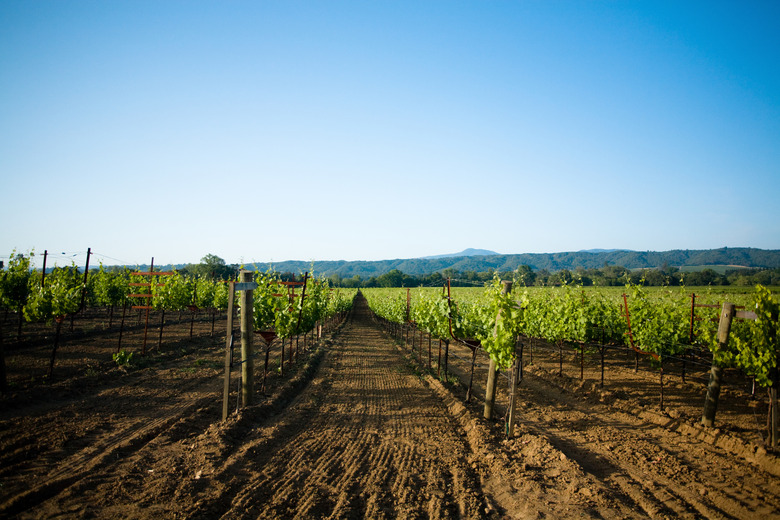Differences Between Mediterranean Climate And Humid Subtropical Climate
Among the mildest climate zones in the middle latitudes of the Earth are those classified under the modified Köppen system, the most prevalent scheme used to define global climates, named after German climatologist Wladimir Köppen, as Mediterranean and humid subtropical climates. (The other major mild midlatitude climate is the marine west coast climate.)
The temperature and precipitation patterns of these two climate types differ significantly despite the comparatively mild winters they share, and they develop in different geographic settings.
Geographic Location and Extent
Geographic
Location and Extent
Mediterranean climates are primarily found on the western edges of continents, where cool ocean currents serve as one of the dominating influences. Humid subtropical climates, meanwhile, tend to be found roughly on the opposite side of the continents, bordering eastern coastlines and warmer ocean currents.
Mediterranean climates cover a very restricted area of the planet's total land surface, mostly found between 30 and 45 degrees of latitude. They account for relatively modest swaths of the U.S. West Coast (primarily California), southwestern South America and southern Australia and a smaller outpost of southwestern Africa. The most extensive domain of Mediterranean climate is in the basin of the Mediterranean Sea, which gives the climate zone its name.
Humid subtropical climates prevail over a larger area, mostly between 20 and 35 degrees of latitude but extending equatorward to about 15 degrees and poleward to about 40 degrees. They're most extensive in North America (the south-central and southeastern U.S.) and Asia, where in many cases they grade northward into humid continental climates, as well as South America, with smaller coastal examples in southeastern Africa and eastern Australia.
Temperature and Humidity in Mediterranean vs. Humid Subtropical Climates
Temperature and Humidity in Mediterranean vs. Humid Subtropical Climates
Mediterranean and humid subtropical climates share fairly mild winters and warm to hot summers but only generally. Humid subtropical climates are more broadly exposed to occasional invasions by cold air in winter.
Overall, wintertime temperatures in this zone tend to be 10 to 20 degrees Fahrenheit colder than in Mediterranean climates.
Mediterranean climates are sub-categorized based on whether they experience warm or hot summer temperatures. Summers in the humid subtropical zone are also warm or hot, but they come with much higher humidity, resulting in sultry weather that generally feels more uncomfortable than the dry summer heat of the Mediterranean climate zones.
Differences in Precipitation Patterns
Differences
in Precipitation Patterns
Though it tends to peak in summer with outbreaks of thunderstorms, inflows of marine air and (in the U.S. and Asia) occasional landfalls of tropical cyclones, precipitation in the humid subtropical climate is fairly ample all year round. The exception is the Asian humid subtropical zone, where the monsoon influence results in dry winters.
Precipitation is both less and more strikingly seasonal in Mediterranean climates, which receive the vast majority of their rainfall in winter and experience very dry summers.
The dryness of summer comes on account of the poleward movement of the subtropical highs, migratory areas of high-pressure that tend to suppress precipitation. When these highs move equatorward in winter, Mediterranean climates fall under the rainier influence of cyclonic storms steered by the westerlies.
Climate Impacts: The Look on the Ground
Climate
Impacts: The Look on the Ground
The major differences between humid subtropical and Mediterranean climates are expressed ecologically in many ways. The generous precipitation of humid subtropical climates support extensive forests and wetlands, while drought-tolerant shrublands, woodlands and grasslands are more prevalent in the drier Mediterranean zones.
Agriculture in Mediterranean climates has to contend with the seasonal, overall scanty precipitation, while farmers in humid subtropical climates are impacted by more significant winter frosts and cold spells.
Cite This Article
MLA
Shaw, Ethan. "Differences Between Mediterranean Climate And Humid Subtropical Climate" sciencing.com, https://www.sciencing.com/differences-between-mediterranean-climate-humid-subtropical-climate-21181/. 28 June 2019.
APA
Shaw, Ethan. (2019, June 28). Differences Between Mediterranean Climate And Humid Subtropical Climate. sciencing.com. Retrieved from https://www.sciencing.com/differences-between-mediterranean-climate-humid-subtropical-climate-21181/
Chicago
Shaw, Ethan. Differences Between Mediterranean Climate And Humid Subtropical Climate last modified March 24, 2022. https://www.sciencing.com/differences-between-mediterranean-climate-humid-subtropical-climate-21181/
